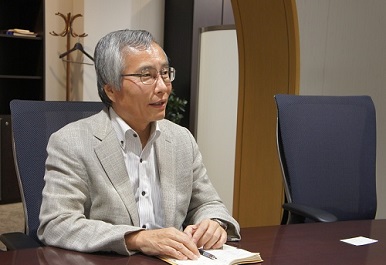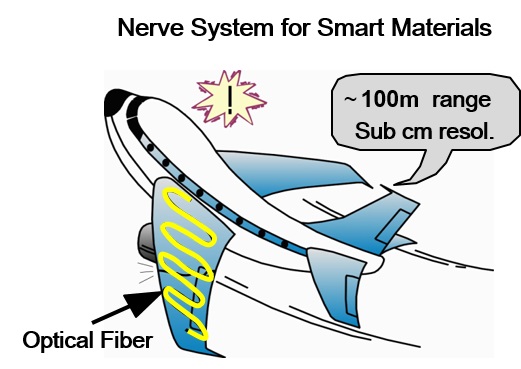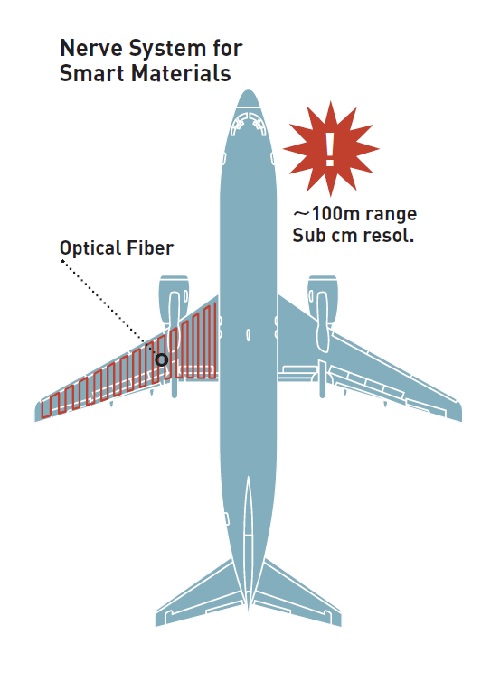Areas managed: research, University-corporate relations, assets and facilities

Kazuo Hotate
Graduated from the University of Tokyo's Faculty of Engineering in 1974. Completed his Doctoral degree at the Graduate School of Engineering in 1979. Became a professor at the Research Center for Advanced Science and Technology in 1993. Became a professor at the Graduate School of Engineering in 1997. Was the dean of the Graduate School of Engineering and Faculty of Engineering from 2008-09. Was the director general of the Division of University Corporate Relations from 2011-13. Area of expertise: electronic engineering
Graduated from the University of Tokyo's Faculty of Engineering in 1974. Completed his Doctoral degree at the Graduate School of Engineering in 1979. Became a professor at the Research Center for Advanced Science and Technology in 1993. Became a professor at the Graduate School of Engineering in 1997. Was the dean of the Graduate School of Engineering and Faculty of Engineering from 2008-09. Was the director general of the Division of University Corporate Relations from 2011-13. Area of expertise: electronic engineering
How did the president come to ask you to do this job?
"He and I know each other very well since he played a very important role in the University's administration back when I was the dean of the Faculty and Graduate School of Engineering. After he was elected president, I encouraged him by saying 'Take care of your health and do your best,' after which he replied 'You make it sound like this doesn’t involve you,' and laughed. A short while after that, he asked me if I would become an executive vice president."
"Working in research is conducting research itself, while working in the Administration Bureau is about supporting those conducting research so that they can do so more happily. I particularly plan to press forward with tasks such as helping researchers attain research funding, Graduate School reforms, and the thorough compliance with research ethics. When it comes to research promotion, having a comprehensive understanding of what research ethics are is vital. I believe that a deep understanding of research ethics acts as an 'accelerator' to the 'vehicle' of research. I also serve as the director of the Research Ethics Advancement Office, and I think that it is the director's job to make it substantially easier to press down on that 'accelerator pedal' in order to advance research."
"Working in research is conducting research itself, while working in the Administration Bureau is about supporting those conducting research so that they can do so more happily. I particularly plan to press forward with tasks such as helping researchers attain research funding, Graduate School reforms, and the thorough compliance with research ethics. When it comes to research promotion, having a comprehensive understanding of what research ethics are is vital. I believe that a deep understanding of research ethics acts as an 'accelerator' to the 'vehicle' of research. I also serve as the director of the Research Ethics Advancement Office, and I think that it is the director's job to make it substantially easier to press down on that 'accelerator pedal' in order to advance research."
What can you tell us about University-corporate relations, which are advancing knowledge collaboration?
"UTokyo is accumulating a great deal of positive results from collaborating with corporations. There are already more than 200 University-related venture companies, and their combined stock market value is over one trillion yen. The University is also cooperating with a capital contribution initiative (The Public and Private Sector Innovation Program), through which ideas originating from UTokyo are being implemented in society. As an executive vice president, I want to utilize my three years of experience as the director of the Division of University Corporate Relations to continue with these initiatives."
"In research conducted at universities, you have to do what others aren't doing. When carrying out basic research or any other kind of research, I want the University to come up with new ideas, and I want to connect these ideas to wider strides in innovation. Doing so in a way that responds to the needs of corporations would be good, as would doing so in a way that combines your own capabilities with external techniques and knowledge. We will press forward with creative knowledge collaboration from a variety of approaches."
"In research conducted at universities, you have to do what others aren't doing. When carrying out basic research or any other kind of research, I want the University to come up with new ideas, and I want to connect these ideas to wider strides in innovation. Doing so in a way that responds to the needs of corporations would be good, as would doing so in a way that combines your own capabilities with external techniques and knowledge. We will press forward with creative knowledge collaboration from a variety of approaches."
Why did you decide to become a researcher?
"When I was a child, I loved making models and flying radio-controlled toy airplanes, so I thought that when I grew up I either wanted to be an old guy running a model toy store or an engineer. When making the decision of which Faculty to enter during my final two undergraduate years at the University, I immediately went with the Faculty of Engineering. What I had trouble deciding, though, was whether I wanted to major in aeronautical engineering or electronic engineering. I guess it's basically the difference between an airframe and a transmitter for a radio-controlled toy. (laughs) When I was still trying to decide which major to go into, I saw my friend's older brother putting together a radio, which made me choose electronic engineering. I liked creating things and making them move."
Could you tell us about the "Fiber Optic Nerve Systems for Structures and Materials That Can Feel Pain" that you have proposed and advocated?
"These kinds of systems are typically called 'fiber optic distributed strain sensors,' but I used the name 'fiber optic nerve systems for structures and materials that can feel pain' to make the concept easier to understand. When you hit something with your hand, you immediately draw your hand back because of the nerves running throughout the human body. Nerves allow you to feel the degree of pain and where the pain is located on your body, and these nerve functions can be applied to structures and materials. Say, for instance, you had nerves running through a bridge, and there was an earthquake. Thanks to the nerves, you would be able to know which parts of the bridge were damaged by the earthquake and to what extent. In other words, you could understand the 'pain' experienced by the bridge, and you could therefore come up with effective measures to repair the bridge. These nerves use optical fibers, which are made of glass. They are about the same width as piano wires, but actually much sturdier."
"I proposed and developed a new idea for examining the distribution of structural distortions and temperatures. With the standard method of using optical pulses for position detection, a high spatial resolution cannot be achieved. I devised a method which utilizes the interference phenomenon of light, which raises the resolution by more than two digits. Another major advantage of this method is that you can take measurements in an instant. I am currently conducting empirical research on this method with companies and other organizations that work with aircraft and measuring instruments. I believe there is a wide range of uses for this technology, including in chemical plants, airplanes, boats, tunnels and buildings."
"I proposed and developed a new idea for examining the distribution of structural distortions and temperatures. With the standard method of using optical pulses for position detection, a high spatial resolution cannot be achieved. I devised a method which utilizes the interference phenomenon of light, which raises the resolution by more than two digits. Another major advantage of this method is that you can take measurements in an instant. I am currently conducting empirical research on this method with companies and other organizations that work with aircraft and measuring instruments. I believe there is a wide range of uses for this technology, including in chemical plants, airplanes, boats, tunnels and buildings."
* This interview was originally printed in Tansei 31 (Japanese language only).








